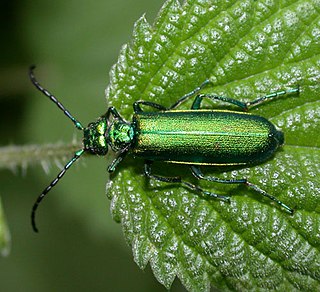
The Spanish fly is an aposematic emerald-green beetle in the blister beetle family (Meloidae). It is distributed across Eurasia.

Blister beetles are beetles of the family Meloidae, so called for their defensive secretion of a blistering agent, cantharidin. About 7,500 species are known worldwide. Many are conspicuous and some are aposematically colored, announcing their toxicity to would-be predators.

The Tenebrionoidea are a very large and diverse superfamily of beetles. It generally corresponds to the Heteromera of earlier authors.
Lytta mutilata is a species of blister beetle in the family Meloidae. It is found in Central America and North America.
Lytta navajo is a species of blister beetle in the family Meloidae. It is found in North America.
Lytta reticulata is a species of blister beetle in the family Meloidae. It is found in North America.
Lytta melaena is a species of blister beetle in the family Meloidae. It is found in North America.

Meloinae is a subfamily of beetles in the family Meloidae. There are at least 330 described species in Meloinae.
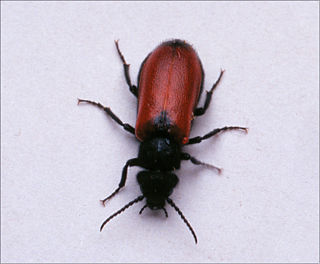
Tricrania is a genus of blister beetles in the family Meloidae. There are at least two described species in Tricrania.
Pyrota tenuicostatis, the red-margined blister beetle, is a species of blister beetle in the family Meloidae. It is found in Central America and North America.
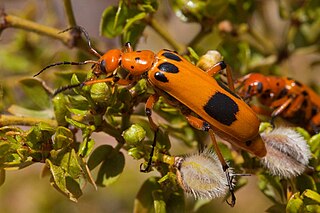
Pyrota postica is a species of blister beetle in the family Meloidae. It is found in Central America and North America.
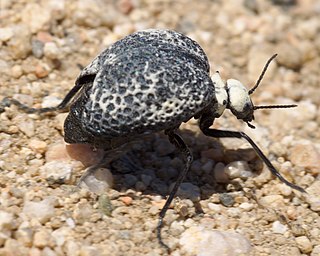
Eupomphini is a tribe of blister beetles in the family Meloidae. There are about 7 genera and more than 20 described species in Eupomphini.

Cysteodemus is a genus of desert spider beetles in the family Meloidae. There are at least two described species in Cysteodemus.
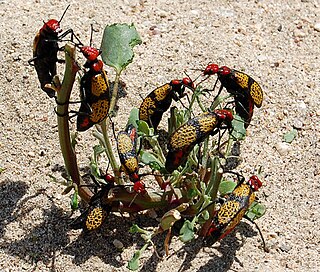
Tegrodera aloga, the iron cross blister beetle, is a species of blister beetle in the family Meloidae. It is found in Arizona, California, and Sonora.

Tegrodera is a genus of beetles known as iron cross blister beetles and soldier blister beetles. They are in the family Meloidae. There are three described species in Tegrodera.
Tegrodera erosa is a species of blister beetle in the family Meloidae. It is found from California south to Sinaloa.

Cordylospasta is a genus of blister beetles in the family Meloidae. There are at least two described species in Cordylospasta.
Linsleya is a genus of blister beetles in the family Meloidae. There are about five described species in Linsleya.
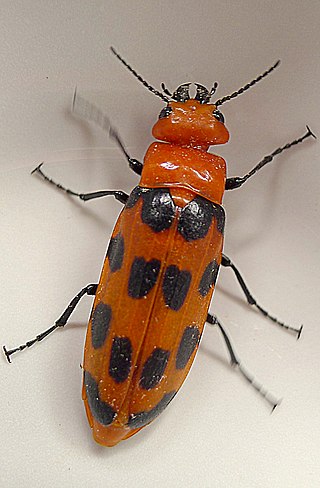
Cissites is a genus of blister beetles in the family Meloidae. There are at least four described species in Cissites.
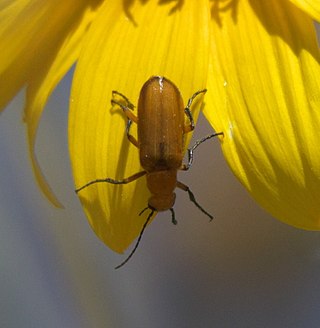
Nemognathinae is a subfamily of blister beetles in the family Meloidae. There are about 8 genera and at least 120 described species in Nemognathinae.










